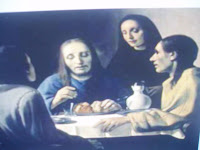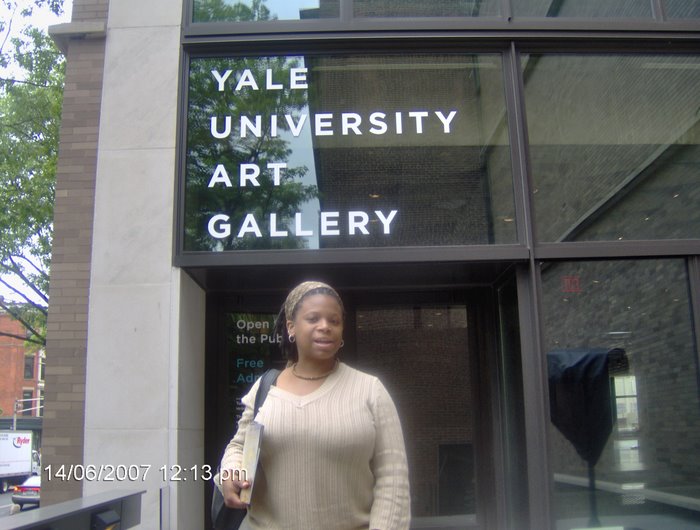 NEW YORK METROPOLITAN MUSEUM
NEW YORK METROPOLITAN MUSEUM

Paul Cezanne “The Card Players”

Cezanne was born on January 19, 1839 in France. He studied law from 1859 to 1861 in France and also attended drawing classes. In opposition to his fathers wishes he decided to pursue his art career. In Paris he met Camille Pissarro a novelist. Cezanne, however, remained an outsider to their circle; from 1864 to 1869 he submitted his work to the official Salon and saw it consistently rejected. His paintings of 1865-70 form what is usually called his early "romantic" period. Extremely personal in character, it deals with bizarre subjects of violence and fantasy in harsh, somber colors and extremely heavy paintwork.
“Paul Cézanne pursued his interests more and more in artistic isolation. He is a predecessor of modern painting; his drawing exhibits exactly what his eye saw “for the traits of graphic form that he achieved through a exclusive handling of space, mass, and color.” Cézanne was a modern of the impressionists, but he went past their interests in the individual brushstroke and the fall of light onto objects, to create, in his words, "something more solid and durable, like the art of the museums. Cézanne rejected that kind of approach and worked his way out of the obsessions underlying it, his art is conveniently divided into three phases. In the early 1870s, through a mutually helpful association with Pissarro, with whom he painted outside Paris at Auvers, he assimilated the principles of color and lighting of impressionism and loosened up his brushwork; yet he retained his own sense of mass and the interaction of planes, as in House of the Hanged Man (1873; Musee d'Orsay, Paris).”
In the late 1870s Cézanne entered the phase known as "constructive," characterized by the grouping of parallel, hatched brushstrokes in formations that build up a sense of mass in themselves. He continued in this style until the early 1890s, when, in his series of paintings titled Card Players (1890-92), the upward curvature of the players' backs creates a sense of architectural solidity and thrust, and the intervals between figures and objects have the appearance of live cells of space and atmosphere.
Living in solitary in Aix he concentrated on a few basic subjects: still lives of studio objects built around elements, model and drawing upon a combination of memory, earlier studies, and sources in the art of the past; and painting views in close proximity landmarks, while in his studio looking across the valley. He practice using watercolor in his final years, which had transparent and an unfinished look. His last paintings are solemn and spiritual. He continued in this style until the early 1890s, when, in his series of paintings titled Card Players (1890-92), the upward curvature of the players' backs creates a sense of architectural solidity and thrust, and the intervals between figures and objects have the appearance of live cells of space and atmosphere.”
Paul Cezanne used curves and shapes conveys. Through color and composition the artist established a serious card game being played in the late 1800’s. The function it serves is to display a form of entertainment among middle class men or perhaps cowboys.
The symbolism the work contained were men how appeared to be heavy cigar smokers and who play their card game regularly.
The message I interrupted was that the on looker in the far back of the painting with the dark overcoat and cigar was either making sure no one cheated or he was waiting for someone to lose, so he can get into the next game. The men are very serious. The message communicated in this painting is play hard. The cultural, political, economic, social or religious influence on the life of the artist and the community in which he/she worked was to exhibit the "romantic" period. The style of the work reflects the time or culture in which it is made was modern painting. The Card Players exhibits exactly what his eye saw “for the traits of graphic form that he achieved through a exclusive handling of space, mass, and color.” The composition appears to show gambling. What stands out the most when I first approaching the work was that the men wasn’t giving each other eye contact.
www.ibibilo.org/wm/paine/auth/cezanne/bio.html
Source: The Grolier Multimedia Encyclopedia
“Paul Cézanne pursued his interests more and more in artistic isolation. He is a predecessor of modern painting; his drawing exhibits exactly what his eye saw “for the traits of graphic form that he achieved through a exclusive handling of space, mass, and color.” Cézanne was a modern of the impressionists, but he went past their interests in the individual brushstroke and the fall of light onto objects, to create, in his words, "something more solid and durable, like the art of the museums. Cézanne rejected that kind of approach and worked his way out of the obsessions underlying it, his art is conveniently divided into three phases. In the early 1870s, through a mutually helpful association with Pissarro, with whom he painted outside Paris at Auvers, he assimilated the principles of color and lighting of impressionism and loosened up his brushwork; yet he retained his own sense of mass and the interaction of planes, as in House of the Hanged Man (1873; Musee d'Orsay, Paris).”
In the late 1870s Cézanne entered the phase known as "constructive," characterized by the grouping of parallel, hatched brushstrokes in formations that build up a sense of mass in themselves. He continued in this style until the early 1890s, when, in his series of paintings titled Card Players (1890-92), the upward curvature of the players' backs creates a sense of architectural solidity and thrust, and the intervals between figures and objects have the appearance of live cells of space and atmosphere.
Living in solitary in Aix he concentrated on a few basic subjects: still lives of studio objects built around elements, model and drawing upon a combination of memory, earlier studies, and sources in the art of the past; and painting views in close proximity landmarks, while in his studio looking across the valley. He practice using watercolor in his final years, which had transparent and an unfinished look. His last paintings are solemn and spiritual. He continued in this style until the early 1890s, when, in his series of paintings titled Card Players (1890-92), the upward curvature of the players' backs creates a sense of architectural solidity and thrust, and the intervals between figures and objects have the appearance of live cells of space and atmosphere.”
Paul Cezanne used curves and shapes conveys. Through color and composition the artist established a serious card game being played in the late 1800’s. The function it serves is to display a form of entertainment among middle class men or perhaps cowboys.
The symbolism the work contained were men how appeared to be heavy cigar smokers and who play their card game regularly.
The message I interrupted was that the on looker in the far back of the painting with the dark overcoat and cigar was either making sure no one cheated or he was waiting for someone to lose, so he can get into the next game. The men are very serious. The message communicated in this painting is play hard. The cultural, political, economic, social or religious influence on the life of the artist and the community in which he/she worked was to exhibit the "romantic" period. The style of the work reflects the time or culture in which it is made was modern painting. The Card Players exhibits exactly what his eye saw “for the traits of graphic form that he achieved through a exclusive handling of space, mass, and color.” The composition appears to show gambling. What stands out the most when I first approaching the work was that the men wasn’t giving each other eye contact.
www.ibibilo.org/wm/paine/auth/cezanne/bio.html
Source: The Grolier Multimedia Encyclopedia





























